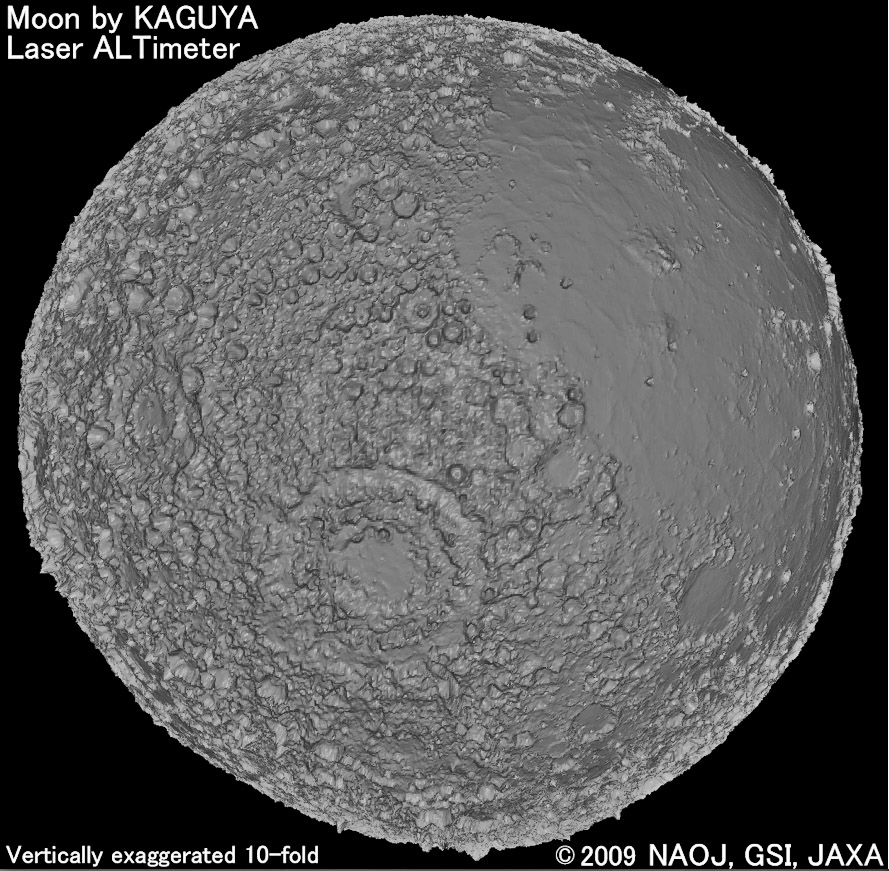May 29, 2009
3-D Ball

image by Kaguya Image Gallery|
Finally we are beginning to get global topography of the Moon. Planet-wide topography of Earth and Mars has been available for a decade or so, allowing many new types of studies and visualizations of data. The Japanese Kaguya alimetry data, shown here with 10 times vertical exaggeration, is the highest quality topo data available for the Moon. Kaguya data files have not been released yet, but a new topo map and a visualization of a rotating globe have just been published. Go to the Kaguya website to admire this wonderful visualization. This snapshot of the turning globe emphasizes the difference between the nearside with its smooth maria, and the farside's crater mountain lands. To me this image is evidence for the giant Gargantuan nearside basin. If there was not such a scraping clean of the hyper-cratered surface why is the Procellarum mare so smooth? Also, look over at Mare Imbrium - notice how the area inside the inner mare ring is smoother than the region between that ring and the basin rim. This suggest mare ridges don't occur where mare lavas are deepest. I think Kaguya's new topography data will open a new period of studying mare ridges and impact basin structures.
Chuck Wood



